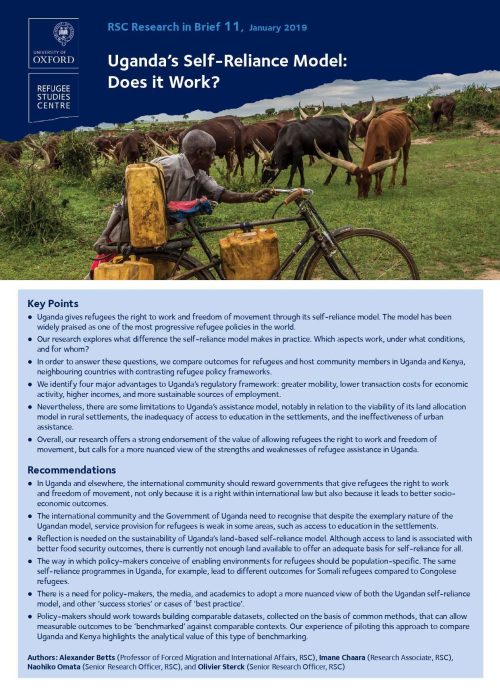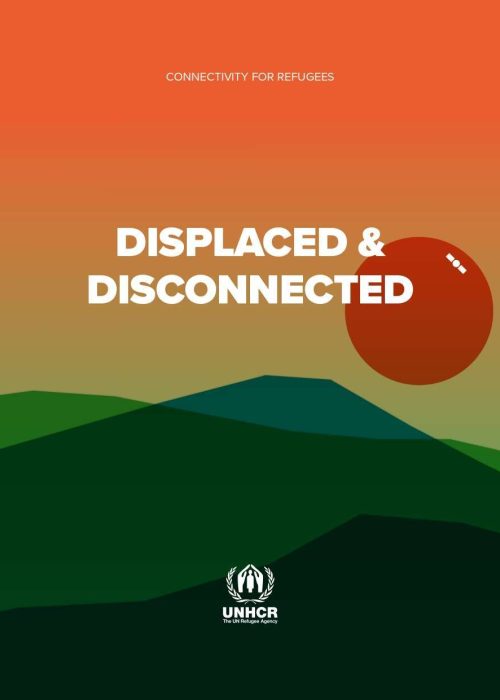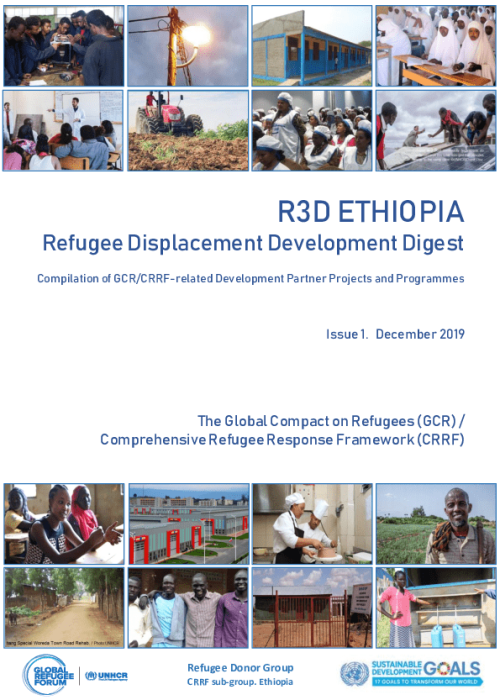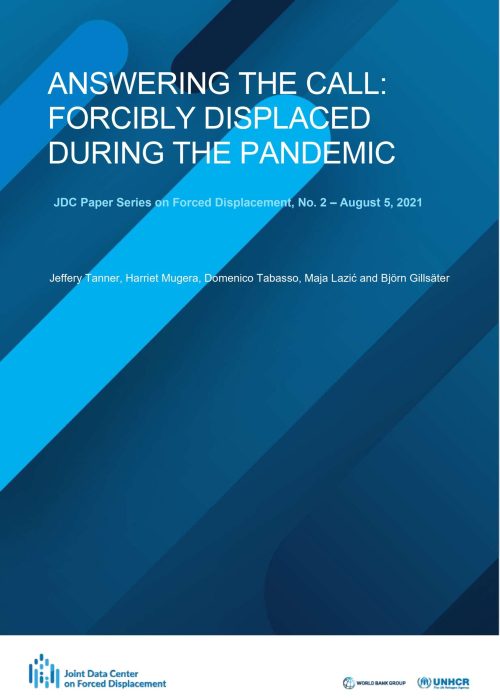Refugees in Uganda are either self-settled or live in organized settlements that cover approximately 350 square miles of land set aside by the government of Uganda. Many refugees, especially in the northern districts, are in protracted displacement, and the Ugandan constitution prohibits the naturalization of an offspring of a refugee, even if he or she is born in Uganda and even if one parent is Ugandan. Some refugees have the option of returning to their country of origin, and some can resettle in a third country, often in the West, but doing so is expensive and not viable at a large scale.
This study includes a legal and policy analysis and a socioeconomic impact assessment, the former complementing the latter. The impact of legal and policy frameworks on the refugee situation in Uganda are analyzed, as are the social and economic impacts and the contribution of the current policy framework on these outcomes for the refugees. The study employs qualitative and quantitative research methods and covers refugees in rural and urban sites in Uganda. The study’s primary focus is on the socioeconomic impact of Uganda’s refugee law on the refugees themselves. This focus and the tight timeframe did not allow the team to assess the socioeconomic impact of the presence of refugees on host communities. That will require a separate and broader study.






